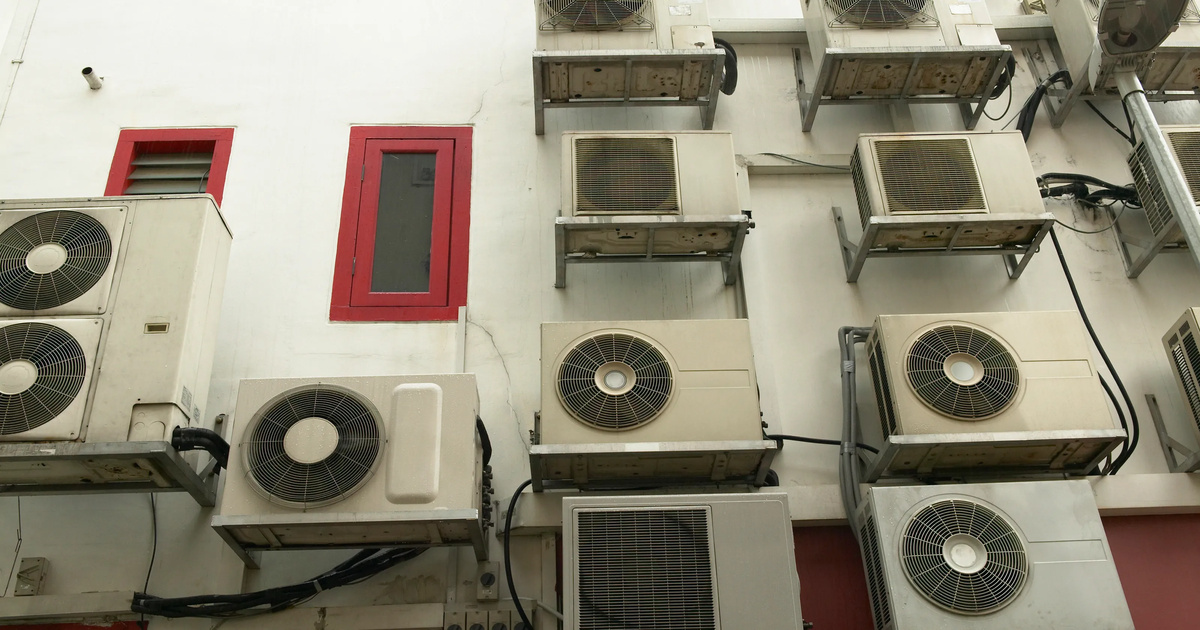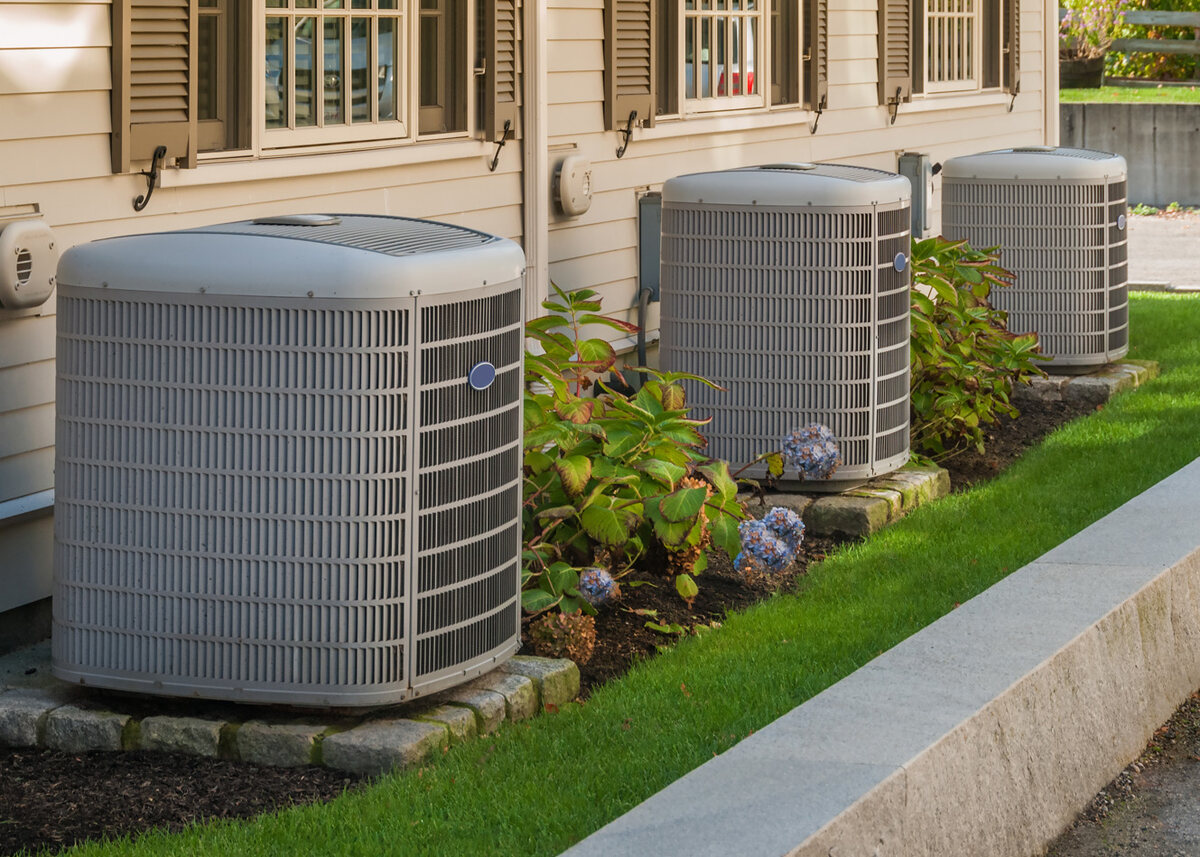Home>Home Maintenance>How Does Air Conditioning Contribute To Global Warming


Home Maintenance
How Does Air Conditioning Contribute To Global Warming
Modified: March 6, 2024
Discover how air conditioning can impact the environment and contribute to global warming. Learn how proper home maintenance can help mitigate these effects.
(Many of the links in this article redirect to a specific reviewed product. Your purchase of these products through affiliate links helps to generate commission for Storables.com, at no extra cost. Learn more)
Introduction
With the increasing global temperatures and the need for comfort in our homes and offices, air conditioning has become a ubiquitous feature of modern society. From hot summers to chilly winters, air conditioning systems provide us with the perfect indoor climate to escape the harsh weather conditions. However, as much as we rely on air conditioning for our comfort, we cannot ignore its impact on the environment, specifically its contribution to global warming.
In this article, we will explore the relationship between air conditioning and global warming. We will delve into the various types of air conditioning systems, their importance in today’s world, and the alarming environmental consequences they impose. Additionally, we will discuss the effects of air conditioning on climate change and explore potential strategies to mitigate its impact.
It is crucial to understand that while air conditioning provides immediate relief and comfort, its extensive use has far-reaching consequences that demand our attention. By gaining insight into the environmental implications of air conditioning, we can make informed decisions to minimize our carbon footprint and create a more sustainable future.
Key Takeaways:
- Air conditioning contributes to global warming through energy consumption and harmful refrigerants, creating a cycle that worsens climate change.
- To combat air conditioning-related global warming, we can adopt energy-efficient technologies, transition to eco-friendly refrigerants, and explore sustainable cooling solutions.
Read more: How Does Marine Air Conditioning Work
Overview of Air Conditioning Systems
Air conditioning systems are designed to regulate indoor temperature and humidity levels to create a comfortable living or working environment. They employ various mechanisms to cool or heat the air and distribute it effectively throughout the space. Let’s take a closer look at the different types of air conditioning systems and understand their significance in modern society.
Types of Air Conditioning Systems
1. Central Air Conditioning: This is the most common type of air conditioning system used in large homes, commercial buildings, and offices. It consists of a central unit that cools the air and distributes it through ducts to different rooms. Central air conditioning offers uniform cooling throughout the space and can be controlled using thermostats.
2. Split Air Conditioning: In split air conditioning systems, the unit is divided into two parts: the indoor unit and the outdoor compressor. The indoor unit is installed inside the room and is responsible for cooling the air, while the outdoor unit contains the compressor and removes the heat. Split air conditioning systems are ideal for cooling individual rooms or smaller spaces.
3. Window Air Conditioning: Window air conditioners are standalone units that are typically installed in a window frame or a hole in the wall. These units are compact and suitable for cooling single rooms. They are easy to install and relatively affordable, making them a popular choice for residential spaces.
Importance of Air Conditioning in Modern Society
Air conditioning has become an integral part of modern society for several reasons:
1. Comfort: Air conditioning provides relief from extreme temperatures, creating a comfortable indoor environment. It allows us to escape the sweltering heat during summers and stay warm in the cold winter months.
2. Productivity: Comfortable temperatures enhance productivity in both residential and commercial settings. It helps individuals focus better, improves concentration, and promotes a healthier work environment.
3. Health and Well-being: Air conditioning helps maintain optimal humidity levels, reducing the risk of mold and mildew growth that can be detrimental to health. It also filters and circulates air, removing pollutants and allergens, improving indoor air quality.
4. Preservation of Goods: Air conditioning systems play a vital role in preserving perishable goods, such as food, medicine, and data centers. It prevents spoilage, maintains the integrity of products, and ensures their longevity.
While air conditioning offers numerous benefits, it is important to recognize the environmental impact associated with its usage. In the next section, we will explore the detrimental effects of air conditioning on global warming and climate change.
Environmental Impact of Air Conditioning
Air conditioning, while providing comfort and relief, has significant environmental implications. In this section, we will explore the various ways in which air conditioning contributes to global warming and climate change.
Read more: How Does Geothermal Air Conditioning Work
Energy consumption and greenhouse gas emissions
Air conditioning systems require a substantial amount of energy to operate, leading to increased electricity consumption. Most electricity is generated through the burning of fossil fuels, which releases greenhouse gases such as carbon dioxide (CO2) into the atmosphere. The continuous usage of air conditioning systems contributes to higher energy demand and, consequently, an increase in greenhouse gas emissions. This exacerbates the problem of global warming and climate change.
Refrigerants and their role in global warming
Refrigerants are chemicals used in air conditioning systems to transfer heat and provide cooling. However, many traditional refrigerants, such as chlorofluorocarbons (CFCs) and hydrochlorofluorocarbons (HCFCs), have a high global warming potential (GWP). These substances, when released into the atmosphere, trap heat and contribute to the greenhouse effect. In recent years, efforts have been made to transition to more environmentally-friendly refrigerants, such as hydrofluorocarbons (HFCs) with lower GWP. However, even these alternatives still have a significant impact on global warming.
Ozone depletion and air conditioning
Certain refrigerants, particularly CFCs and HCFCs, have been found to deplete the ozone layer. The ozone layer acts as a shield, protecting us from harmful ultraviolet (UV) radiation. The release of CFCs and HCFCs into the atmosphere causes chemical reactions that destroy ozone molecules, leading to the thinning of the ozone layer. This depletion increases the permeability of UV radiation, which can have adverse effects on human health and ecological systems.
It is clear that air conditioning systems have a significant environmental impact. In the next section, we will explore the specific effects of air conditioning on climate change, including the urban heat island effect and the feedback loop between air conditioning and global warming.
Effects of Air Conditioning on Climate Change
Air conditioning has several direct and indirect effects on climate change, exacerbating the problem and creating a feedback loop. In this section, we will explore these effects in detail.
Read more: How Does Ducted Air Conditioning Work
Increased demand for electricity
Air conditioning systems consume a significant amount of electricity to operate, especially during peak usage periods. The increased demand for electricity puts a strain on power grids, which often rely on fossil fuel-based power plants. Burning fossil fuels to generate electricity releases greenhouse gases into the atmosphere, contributing to global warming. Additionally, the infrastructure required to meet the rising demand for electricity also has environmental implications, including landscape disruption and increased carbon emissions during construction.
Urban heat island effect
Urban areas experience what is known as the urban heat island effect, where the temperature is significantly higher compared to surrounding rural areas. The extensive use of air conditioning in cities contributes to this effect. As air conditioners release heat from buildings, it adds to the overall heat load in an urban area. This creates a cycle where the increased demand for air conditioning leads to higher outdoor temperatures, subsequently requiring even more air conditioning. The urban heat island effect not only raises energy consumption but also impacts human health, increasing heat-related illnesses and mortality rates.
Feedback loop between air conditioning and global warming
As global temperatures continue to rise, the demand for air conditioning also increases. This leads to a feedback loop in which the use of air conditioning contributes to global warming, thus further fueling the need for air conditioning. This vicious cycle poses a significant challenge in mitigating climate change. It highlights the importance of finding sustainable cooling solutions that reduce energy consumption and minimize greenhouse gas emissions.
Recognizing the adverse effects of air conditioning on climate change is crucial for implementing mitigation strategies. In the next section, we will explore various approaches to tackle air conditioning-related global warming and create a more sustainable future.
Mitigation Strategies for Air Conditioning-Related Global Warming
To address the environmental impact of air conditioning systems on global warming, it is essential to implement mitigation strategies that promote sustainability and reduce greenhouse gas emissions. In this section, we will explore three key strategies: energy-efficient air conditioning technologies, transition to alternative refrigerants, and sustainable cooling solutions.
Energy-efficient air conditioning technologies
One of the most effective ways to mitigate the environmental impact of air conditioning is to invest in energy-efficient technologies. Energy Star-rated air conditioners are designed to consume less electricity while delivering optimal cooling performance. These systems use advanced sensors, improved insulation, and innovative cooling techniques to minimize energy consumption. By replacing older, inefficient units with energy-efficient models, significant reductions in energy demand and greenhouse gas emissions can be achieved.
Transition to alternative refrigerants
Traditional refrigerants, such as CFCs and HCFCs, have been phased out due to their harmful impact on the ozone layer. However, their alternatives, such as HFCs, still have a high global warming potential (GWP). To combat this, it is crucial to transition to low-GWP or climate-friendly refrigerants. Natural refrigerants, including hydrocarbons (HCs), ammonia, and carbon dioxide (CO2), have minimal impact on global warming and are increasingly being used in refrigeration and air conditioning systems. By adopting these alternative refrigerants, we can significantly reduce the overall carbon footprint of air conditioning systems.
Sustainable cooling solutions
In addition to technological advancements, it is essential to explore sustainable cooling solutions that reduce dependency on traditional air conditioning systems. Passive cooling techniques, such as proper insulation, shading, and natural ventilation, can help maintain comfortable indoor temperatures without relying solely on mechanical cooling. Building design strategies, such as green roofs, cool roofs, and natural landscaping, can also contribute to lower indoor temperatures and reduce the overall cooling demand.
Furthermore, utilizing renewable energy sources, such as solar power, for air conditioning can significantly reduce greenhouse gas emissions. Solar-powered air conditioning systems harness the energy of the sun to generate electricity, reducing reliance on fossil fuel-based power grids. This approach not only reduces environmental impact but also supports the transition towards a renewable energy future.
By implementing these mitigation strategies, we can minimize the environmental impact of air conditioning systems and work towards a more sustainable and climate-friendly approach to cooling our indoor spaces.
Conclusion
Air conditioning plays a vital role in providing comfort and relief from extreme temperatures in our modern society. However, its extensive use has significant environmental implications, particularly in relation to global warming and climate change. Throughout this article, we have explored the various ways in which air conditioning contributes to these environmental challenges.
From the increased demand for electricity and the release of greenhouse gases, to the ozone depletion and the feedback loop between air conditioning and global warming, the environmental impact of air conditioning cannot be ignored. It is crucial that we take proactive measures to mitigate these effects and work towards a more sustainable future.
One key approach to mitigating air conditioning-related global warming is through the adoption of energy-efficient technologies. Investing in energy-efficient air conditioning systems reduces energy demand and subsequently reduces greenhouse gas emissions. Additionally, transitioning to alternative refrigerants with lower global warming potentials is crucial. Natural refrigerants, such as hydrocarbons and carbon dioxide, offer more sustainable options that minimize their impact on global warming.
Furthermore, exploring sustainable cooling solutions is paramount in reducing dependency on traditional air conditioning systems. Passive cooling techniques, optimal building design, and the utilization of renewable energy sources, like solar power, can all contribute to a more sustainable approach to cooling our buildings and reducing our carbon footprint.
As individuals, we can also play a part in minimizing the environmental impact of our air conditioning usage. Implementing energy-saving habits, such as setting higher temperature limits, using ceiling fans to enhance air circulation, and properly maintaining and servicing our air conditioning systems, can all make a difference. Additionally, reducing our reliance on air conditioning whenever possible, especially in mild weather conditions, can help lower our overall energy consumption.
Ultimately, addressing the environmental impact of air conditioning requires a collective effort from individuals, businesses, and governments. Policymakers can support the adoption of energy-efficient technologies, regulate the use of environmentally harmful refrigerants, and incentivize sustainable cooling practices. By working together, we can curtail the contribution of air conditioning to global warming and pave the way for a more sustainable, climate-friendly future.
Frequently Asked Questions about How Does Air Conditioning Contribute To Global Warming
Was this page helpful?
At Storables.com, we guarantee accurate and reliable information. Our content, validated by Expert Board Contributors, is crafted following stringent Editorial Policies. We're committed to providing you with well-researched, expert-backed insights for all your informational needs.












